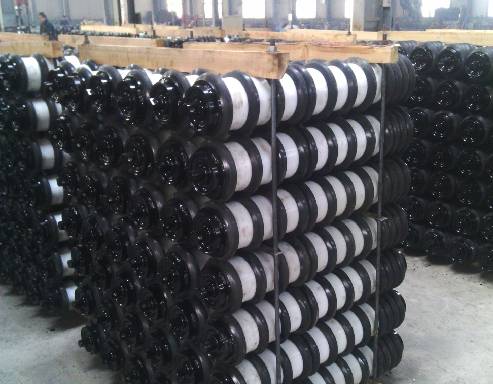 Afrikaans
Afrikaans  Albanian
Albanian  Amharic
Amharic  Arabic
Arabic  Armenian
Armenian  Azerbaijani
Azerbaijani  Basque
Basque  Belarusian
Belarusian  Bengali
Bengali  Bosnian
Bosnian  Bulgarian
Bulgarian  Catalan
Catalan  Cebuano
Cebuano  Corsican
Corsican  Croatian
Croatian  Czech
Czech  Danish
Danish  Dutch
Dutch  English
English  Esperanto
Esperanto  Estonian
Estonian  Finnish
Finnish  French
French  Frisian
Frisian  Galician
Galician  Georgian
Georgian  German
German  Greek
Greek  Gujarati
Gujarati  Haitian Creole
Haitian Creole  hausa
hausa  hawaiian
hawaiian  Hebrew
Hebrew  Hindi
Hindi  Miao
Miao  Hungarian
Hungarian  Icelandic
Icelandic  igbo
igbo  Indonesian
Indonesian  irish
irish  Italian
Italian  Japanese
Japanese  Javanese
Javanese  Kannada
Kannada  kazakh
kazakh  Khmer
Khmer  Rwandese
Rwandese  Korean
Korean  Kurdish
Kurdish  Kyrgyz
Kyrgyz  Lao
Lao  Latin
Latin  Latvian
Latvian  Lithuanian
Lithuanian  Luxembourgish
Luxembourgish  Macedonian
Macedonian  Malgashi
Malgashi  Malay
Malay  Malayalam
Malayalam  Maltese
Maltese  Maori
Maori  Marathi
Marathi  Mongolian
Mongolian  Myanmar
Myanmar  Nepali
Nepali  Norwegian
Norwegian  Norwegian
Norwegian  Occitan
Occitan  Pashto
Pashto  Persian
Persian  Polish
Polish  Portuguese
Portuguese  Punjabi
Punjabi  Romanian
Romanian  Russian
Russian  Samoan
Samoan  Scottish Gaelic
Scottish Gaelic  Serbian
Serbian  Sesotho
Sesotho  Shona
Shona  Sindhi
Sindhi  Sinhala
Sinhala  Slovak
Slovak  Slovenian
Slovenian  Somali
Somali  Spanish
Spanish  Sundanese
Sundanese  Swahili
Swahili  Swedish
Swedish  Tagalog
Tagalog  Tajik
Tajik  Tamil
Tamil  Tatar
Tatar  Telugu
Telugu  Thai
Thai  Turkish
Turkish  Turkmen
Turkmen  Ukrainian
Ukrainian  Urdu
Urdu  Uighur
Uighur  Uzbek
Uzbek  Vietnamese
Vietnamese  Welsh
Welsh  Bantu
Bantu  Yiddish
Yiddish  Yoruba
Yoruba  Zulu
Zulu belt conveyor idler design
Understanding Belt Conveyor Idler Design
Belt conveyors are a crucial component in many industrial settings, enabling the efficient transport of materials. A key element of the conveyor system is the idler, which plays a significant role in supporting the conveyor belt and ensuring smooth operation. This article explores the design considerations and significance of belt conveyor idlers.
What are Conveyor Idlers?
Idlers are the rollers that support the conveyor belt and maintain its alignment during operation. They are pivotal in reducing friction and wear on the belt, which extends its lifespan and enhances efficiency. Idlers come in various designs, including include flat, troughing, and return idlers, each serving specific applications and material types.
Design Considerations
1. Load Capacity The primary function of an idler is to bear the load of the material being transported. Designers must consider the maximum load that the conveyor will handle. Idlers must be strong enough to support this weight without deforming or failing.
2. Material Selection The materials used for idler construction need to withstand the operating environment. Common materials range from steel and aluminum to more specialized composites. In environments with corrosive substances, idlers might require protective coatings or the use of stainless steel.
belt conveyor idler design

3. Roller Diameter The diameter of the rollers influences the idler's performance. Larger diameters are generally more efficient in carrying loads over long distances, as they reduce the ‘bending’ of the belt and lower the risk of wear. However, larger rollers also require careful consideration regarding the overall conveyor design and space availability.
4. Spacing and Alignment Proper spacing between idlers is essential to maintain belt tension and support. Incorrect spacing can lead to increased wear, belt misalignment, and reduced efficiency. Engineers must design the spacing based on the expected belt tension and the weight of the materials transported.
5. Environmental Factors Idlers often operate in challenging conditions, including extreme temperatures, dust, and moisture. The design must account for these factors to prevent failures due to environmental stress. Sealed bearings and dust covers are commonly employed to enhance durability.
6. Maintenance and Accessibility A well-designed idler should not only perform its functions effectively but also allow for easy maintenance. Quick access for inspection and replacement can save time and reduce operational downtime.
Importance of Idler Design
The design of conveyor idlers significantly impacts the overall efficiency and performance of conveyor systems. Well-designed idlers contribute to lower energy consumption, reduced operational costs, and less frequent maintenance. Furthermore, they enhance the reliability of the entire conveyor system, minimizing unplanned downtime and increasing productivity.
In conclusion, the design of belt conveyor idlers is a critical consideration for the effective operation of conveyor systems. By paying attention to load capacity, material choice, roller diameter, spacing, environmental factors, and maintenance, engineers can create idlers that enhance performance and reliability, ultimately benefiting the entire production process. As industries continue to evolve, staying abreast of advances in idler technology will be essential for maintaining competitive advantage in the market.
-
Revolutionizing Conveyor Reliability with Advanced Rubber Lagging PulleysNewsJul.22,2025
-
Powering Precision and Durability with Expert Manufacturers of Conveyor ComponentsNewsJul.22,2025
-
Optimizing Conveyor Systems with Advanced Conveyor AccessoriesNewsJul.22,2025
-
Maximize Conveyor Efficiency with Quality Conveyor Idler PulleysNewsJul.22,2025
-
Future-Proof Your Conveyor System with High-Performance Polyurethane RollerNewsJul.22,2025
-
Driving Efficiency Forward with Quality Idlers and RollersNewsJul.22,2025





























